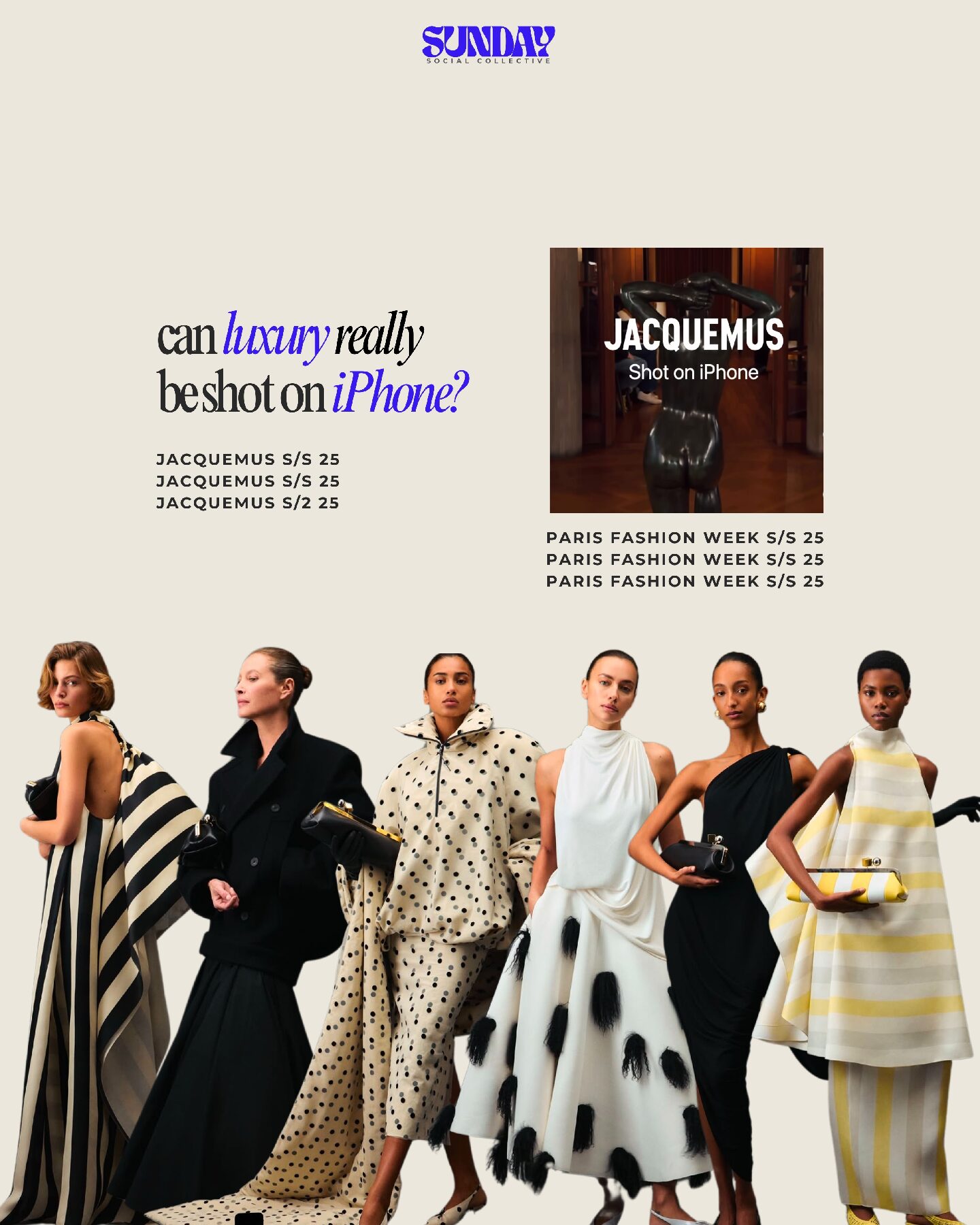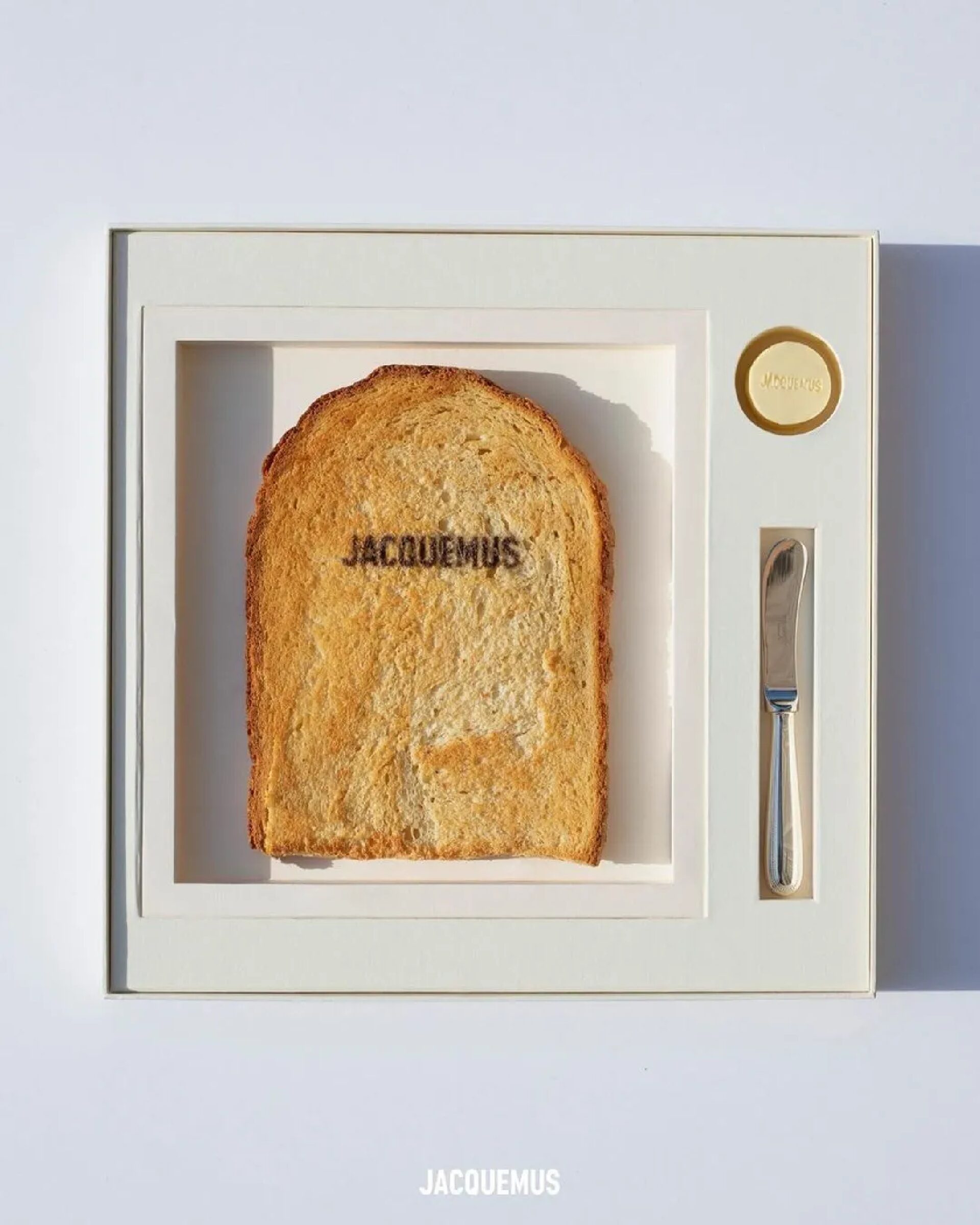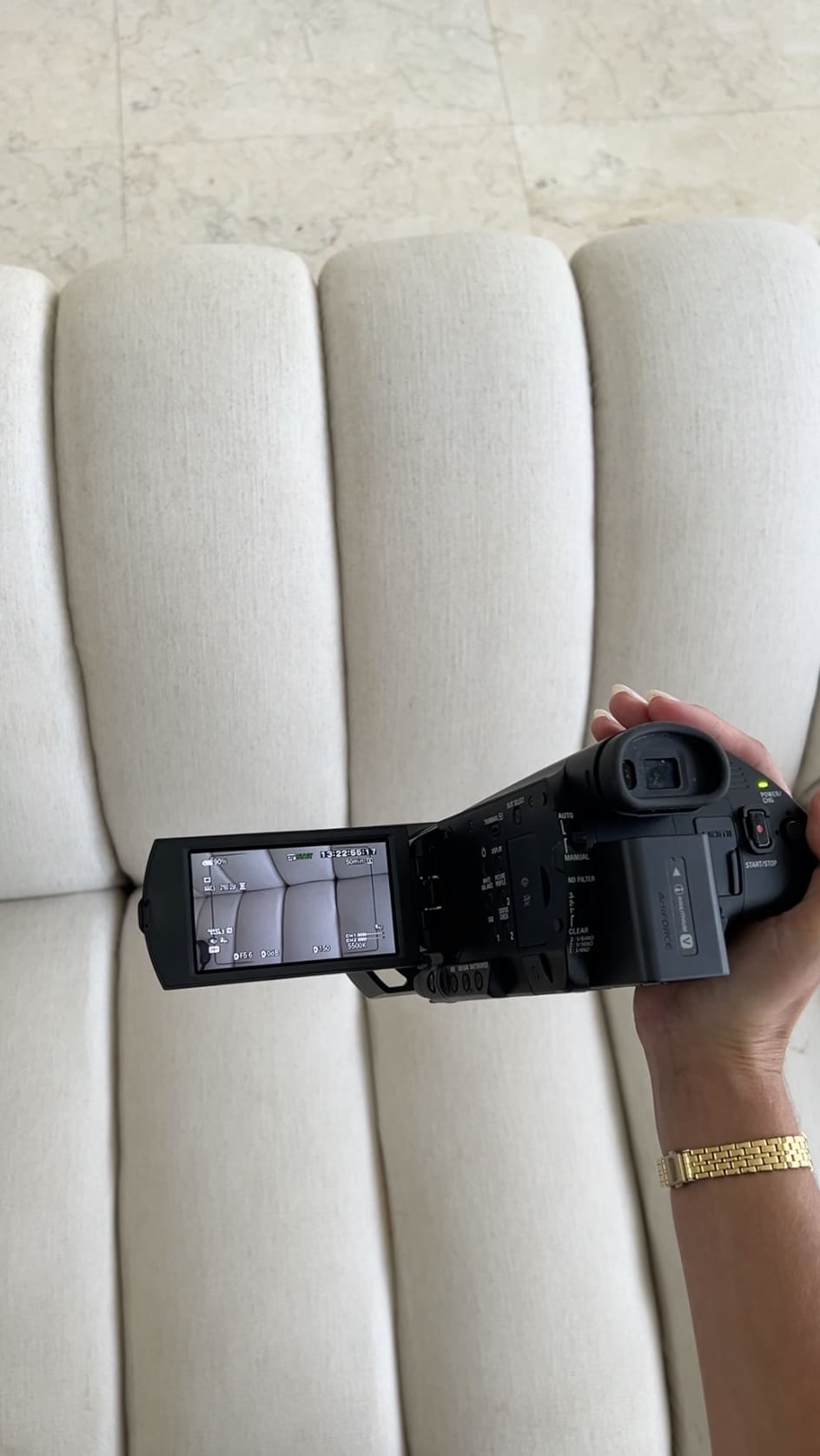Curated content, brand stories, and the stuff worth sharing.
Creative marketing at its core
French designer fashion label, Jacquemus is no stranger to shaking up the fashion world and being super creative with its marketing, especially on social media. For its 2025 Paris Fashion Week runway show, “la croisière,” the brand shot the entire show on Apple‘s iPhone 16 Pro Max – a collaboration we didn’t see coming, offering a ‘fusion of fashion and technology’ according to the joint press release. The brand is known for setting the standard for creative out-of-the-box marketing. It engages with its social media audience through playful posts and doesn’t take itself too seriously, particularly on TikTok.
Redefining luxury
The fashion label has redefined the way luxury labels market to the consumer, particularly to a younger audience. While Jacquemus’ prices its products in the thousands, it also offers affordable luxury accessories for under £100 – significantly lowering the barrier to luxury for the masses. Typically, high-end brands like Chanel and Hermes wouldn’t need to market themselves to a Gen Z or millennial audience, as that is not their target market. With a lower barrier to entry, Jacquemus is more accessible to young people hence why they focus so heavily on marketing to a gen Z and millennial audience, especially on TikTok.
Authenticity is key
While the brand is casual and playful on Tiktok, this doesn’t detract away from its luxury status. In fact, it adds character and personality to the brand. In 2025, authenticity and relatability are king on social media. Content shot on phones often inspires a more ‘in the moment’, genuine and personal feeling than content that is taken on a professional camera – establishing a better connection with viewers. iPhone content often outperforms content that involves a sophisticated production process.
Marrying convenience with quality
Jacquemus’ strategy goes to show that you don’t need fancy equipment to create high-quality content for social media. Phones make content creation more accessible, convenient and spontaneous, and should be a central part of luxury brand’s content strategies.
Here for the iPhone
I personally love this style of content and think we will see more shot-on-iPhone footage on brands’ social media feeds, especially as phone cameras continue to increase in quality and functionality.
What content do you prefer consuming?
January 15, 2025
Brands are tapping into sensory marketing designed to make you crave their products and entice you to ‘taste’ them. Sensory marketing is about stimulating our five senses to make brands and products become more memorable and desirable.
We are seeing a rising trend of beauty and fashion brands using gustatory imagery in their marketing – appealing to our taste sense. Pairing non-food products with food creates enticing and interesting visuals. Food pairs well with beauty and fashion as it creates an aesthetic that makes the products look desirable and delicious By leveraging the universal appeal of food, brands such as Rhode and Jacquemus, are creating campaigns that both garner attention and trigger an emotional response from their audience.
Desirable
If a product is placed next to food, it will naturally look more appetising. Particularly, if we see a food we like (e.g., whipped cream), it entices us to try the product. Descriptive language like ‘buttery’, ‘glazed’ and ‘velvety’ paints a sensory picture for the consumer, aided by the food visuals. By using foods to convey the taste, smell and overall aesthetic of their products, it helps bring life and desirability to products.
Positive associations
Images of dessert and sweet treats have associations with indulgence. By pairing products with food, brands can connote luxury and self-care, prompting their audience to ‘treat’ themselves. It encourages people to build positive associations with the brand. Rhode does this so well! Food triggers feelings of comfort, warmth and enjoyment – making the image feel more relatable. People are drawn to images that evoke emotion and few things do this as universally as food.
Attracts attention
Novelty and absurdity attracts attention. These pictures create an aesthetic contrast; the juxtaposition of products and food adds an element of surprise, making the content memorable and shareable. Using food to promote loungewear creates an unusual juxtaposition to stop the scroll – why would waffles be sandwiched between clothes?
Visually interesting
The aesthetic contrast makes the composition of the photos more visually interesting. This increases its noticeabiltiy and engagement. It is also fun! Brands can illustrate the product’s texture and smell – no words needed!
Creates familiarity
Placing a product alongside something as universal as food creates a sense of familiarity. Put simply, food is something that we can all love and relate to! Viewers feel more connected to the product if it is perceived to be already part of their daily lives.
The lipstick index theory
Food is not new to advertising, but we have seen a rise in food marketing since the pandemic. There is a reason for this; the ‘lipstick index’ is the economic theory that suggests that during economic downturns, people buy small luxuries like lipstick to boost their morale when it’s too expensive to buy larger items like travel abroad. Food is quickly becoming the new luxury and since we all have to eat, food is our universal indulgence.
Does food marketing tempt you to taste the products?
November 15, 2024
What is UGC and why is it important?
UGC, or user-generated content, refers to content created and shared by customers (or ‘users’), rather than the business itself. It helps people recognise that your brand or business is enjoyed by real people – building trust and credibility.
Encouraging customers to actively engage with your brand by sharing their experiences can showcase a diverse range of faces on your social media – providing essential social proof and authenticity.
Businesses that incorporate UGC into their social media strategy are more likely to be trusted by consumers. But don’t just take my word for it – there’s research to support it:
// 93% of marketers say that consumers trust content created by customers more than content created by brands.
// 85% of consumers find visual UGC more influential than brand photos or videos.
// 79% of people say UGC impacts their purchasing decisions.
How to use UGC?
When customers share UGC on their social media profiles, it will extend a brand’s reach and visibility to their networks.
Here’s how you can leverage it in your marketing strategy:
// Encourage customers to share their experiences
// Reward/incentivise customers for sharing
// Encourage reviews
// Consider influencer partnerships
// Incorporate EGC (employee-generated-content)
Sunday offers user-generated style content creation, which can either be purchased as a standalone service or as an add-on to any of the core services. Enquire today.


